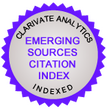How Learning Can be Effective using the Multidimensional Teaching Technique in Business Administration?
DOI:
https://doi.org/10.13058/raep.2018.v19n3.903Keywords:
Active Methods, Multidimensional Teaching Technique, Business Administration CourseAbstract
The aim of this paper is to evaluate learning using a new active methodology option: the Multidimensional Teaching Technique (MTT). It is based on the perception of students who attended the Technological Entrepreneurship course as part of their Business Administration degree at the Federal University of Itajubá, from 2012 to 2016. To that end, a case study was developed using data collected from primary sources through documents and questionnaires. The documents are composed of final reports delivered by these students and self-administered electronic questionnaires addressed to students who had already taken the course. Data analysis was performed using frequency content analysis for the documents and multivariate analysis for the questionnaires, with cluster analysis, the ANOVA test and discriminant analysis. Among the results, three groups were evidenced in the cluster analysis and named: Supporters, Indifferent and Rejecters of the teaching technique. The analysis singled out the most relevant results as: learning about angel investors, in the technical dimension; while for the individual dimension, it was developing their networks and improving their communication skills. The most relevant result for the participating companies was the mentoring provided by angel investors, which was perceived in the society dimension. Finally, it was shown that 91% of the sample agrees wholly or partially that MTT is an alternative to the teaching-learning process in Business Administration.
Downloads
Downloads
Published
How to Cite
Issue
Section
License
By publishing a manuscript in the journal Administração: Ensino e Pesquisa (RAEP), the authors declare that the work is of their exclusive authorship and therefore assume full responsibility for its content. The authors grant RAEP a non-exclusive rights license to use the work in the following ways:
(1) Sell and / or distribute the work in hard copies or electronic format.
(2) Distribute parts of the work as a whole to promote the journal through the internet and other digital and printed media.
(3) Record and reproduce the work in any format, including digital media.
Authors and readers are permitted to share the material, use it in classes, for presentations and also for other purposes, and to create new knowledge based on any RAEP publication, as long as the due credit is attributed to the original work and the respective author(s), through citations, references, and other means.
The journal adopts preventive measures to identify plagiarism using software designed for this purpose.
RAEP does not charge authors for the article submission nor for the publishing of approved articles.
In line with the journal's policies, each published article will be given a Creative Commons CC-BY 4.0 license.










